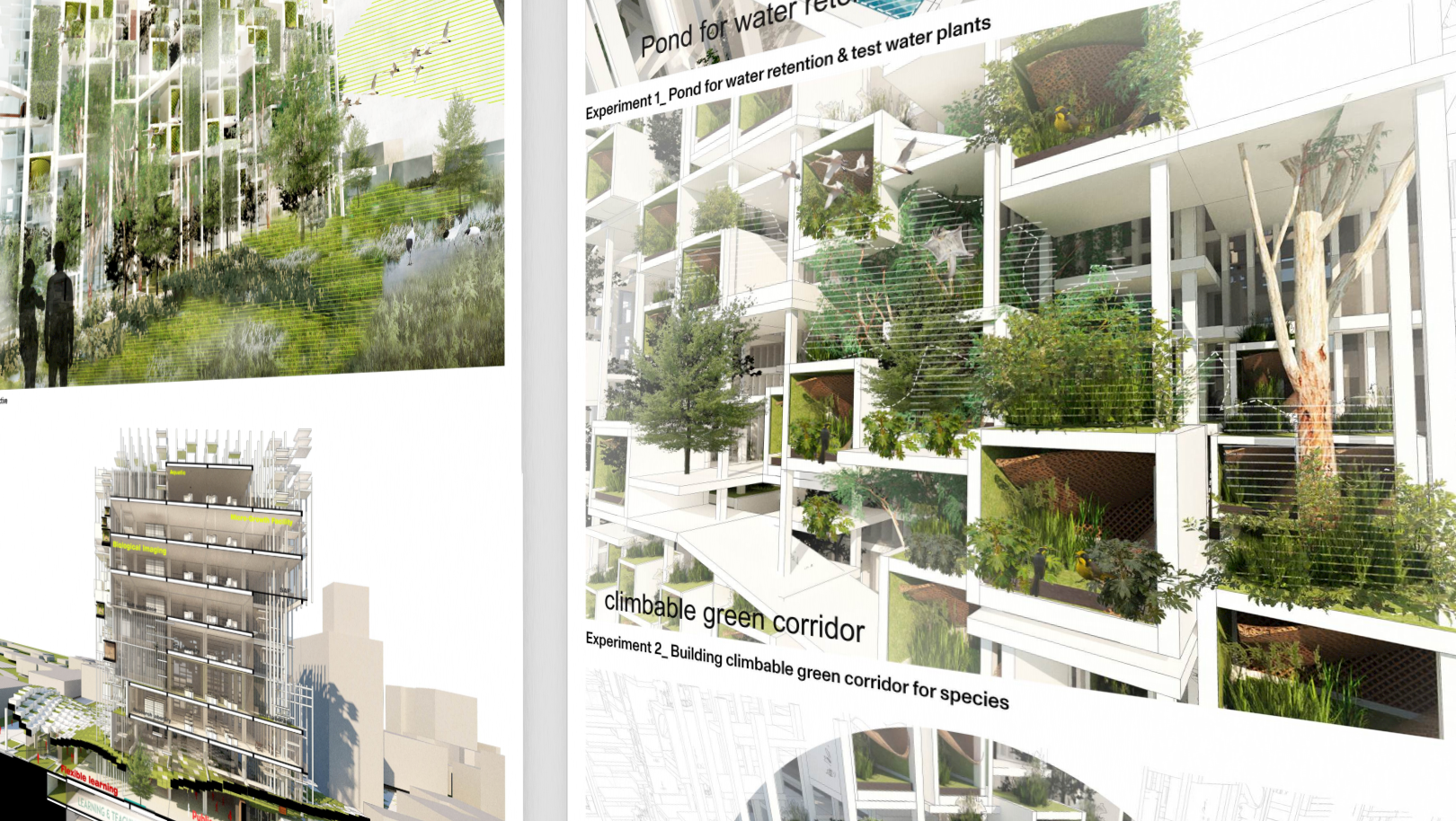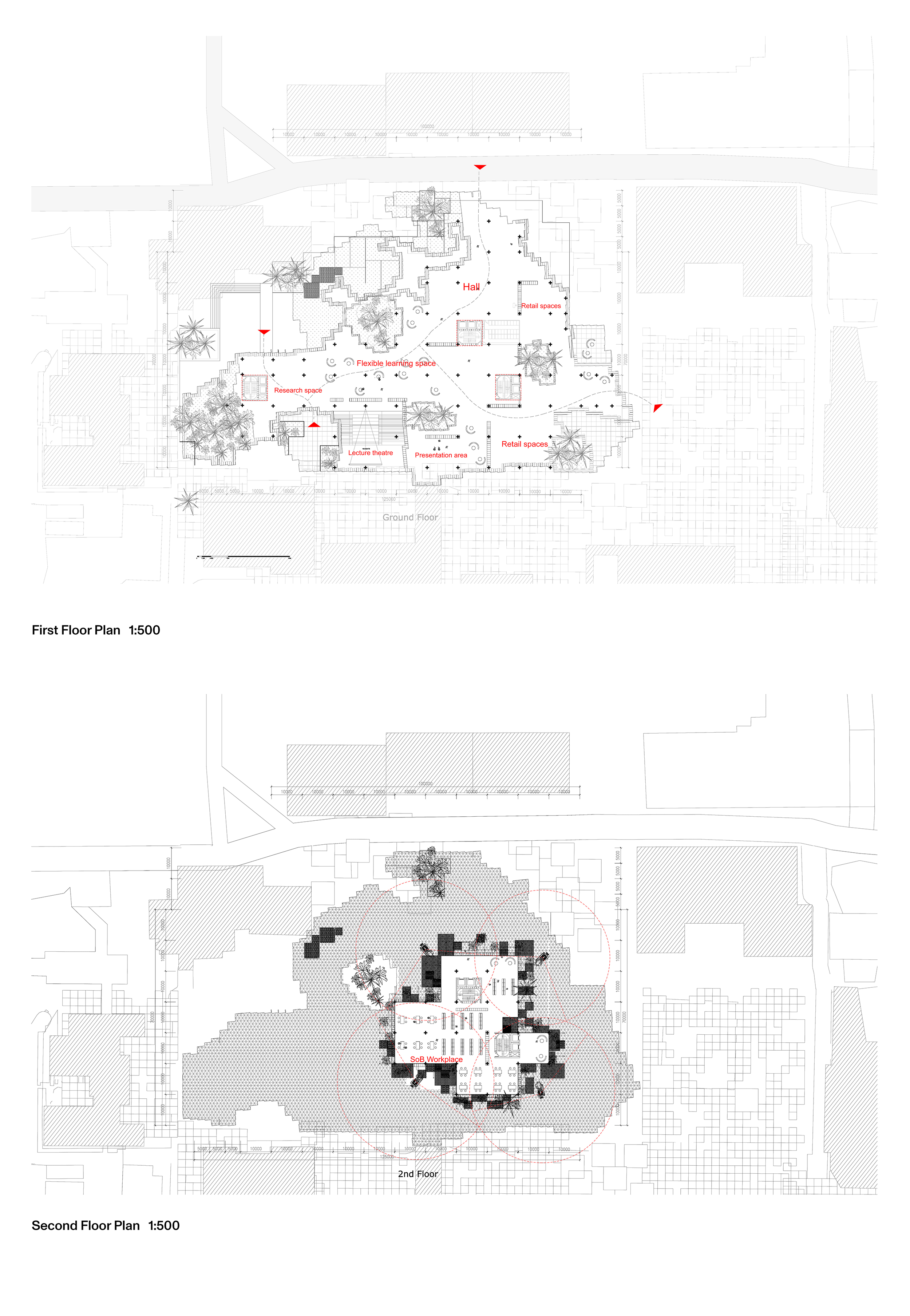Kaidun Luo
Flexible grid frames for avian fauna
Current situation shows that urban artificial light and habitat loss have great significance to avian species. Artificial light may attract birds during migration at night, it can disrupt orientation in night-migrating diurnal birds, especially when the sky is overcast. Night light can increase nocturnal activity in birds living in illuminated habitats. Moreover, living in rainforest and associated habitats can provide a year-round supply of fleshy fruit. Historical declines in habitat over the last three generations are thought to have caused a loss of 30% of the population. Thus, the avifauna need defined spaces in urban areas for not just providing them shelter, but also shielding them from the brutal environmental conditions in cities.
Instead of providing them with traditional shelter-like dovecotes this design thesis proposes shelters that also function as micro ecosystems. Shelters are not the only requirement for birds to thrive. Habitats must also provide access to other needs such as food and water. Therefore, artificial designs should aim to provide space for soil, plants, and water. Such challenges are also common in the case of other urban species.
In response, this thesis considers ways to design a busy university building in a biodiversity-friendly manner. The building is a faculty of biological sciences. Its population conducts biological and ecological experiments. Therefore, my response is to consider the building as a living lab and provide facilities for ongoing experiments with habitats for animals, plants, and other lifeforms. These experiments include mini farms, refugia, micro-climate tests, and others.
At architectural scale, I differentiate the grid modules at several scales for various stakeholders and link the grids together, thus forming a new symbiotic relationship between humans and different species. At the same time, I take advantage of automation and prefabrication technologies to adding and replace modules for flexible utilization.
The project demonstrates that a more-than-human approach to the design of busy buildings can lead to innovative and feasible solutions.











